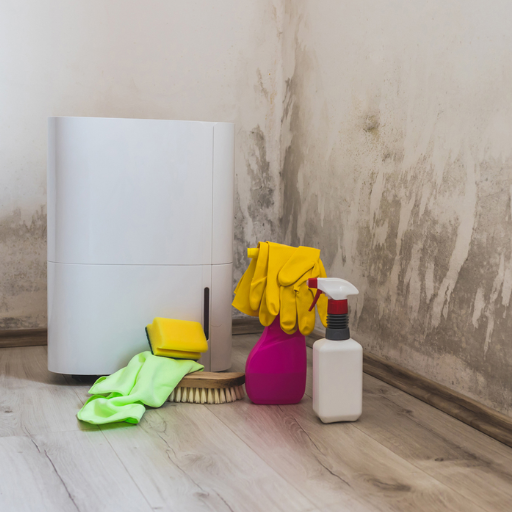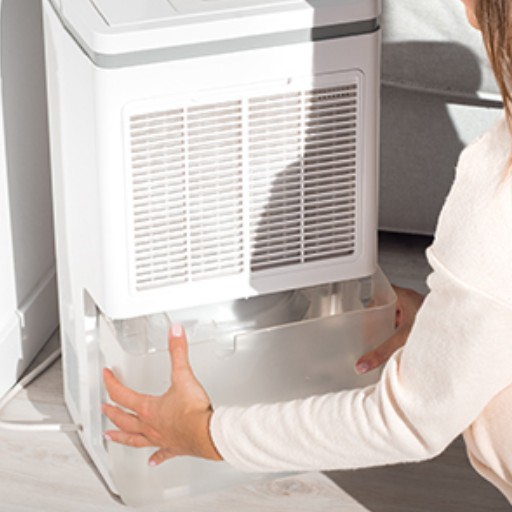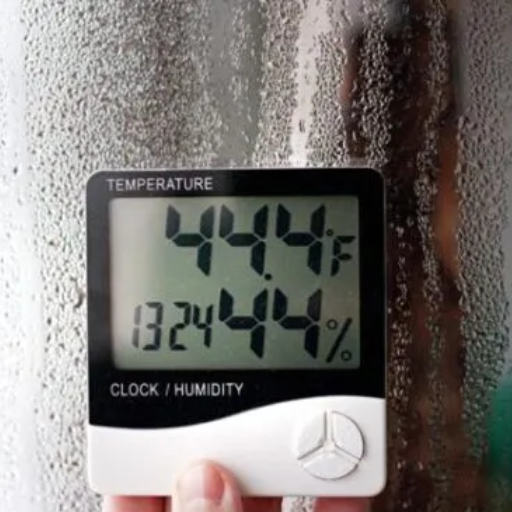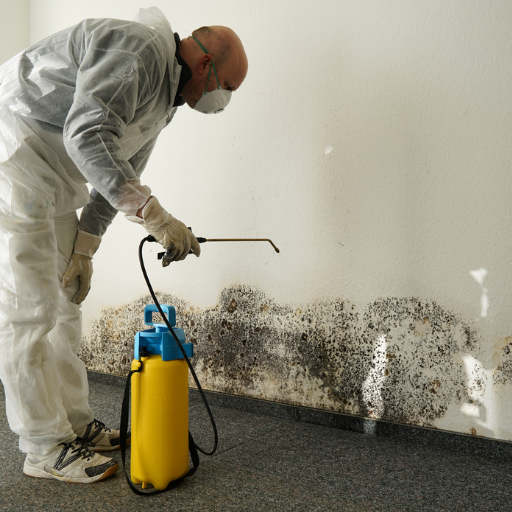The maintenance of a comfortable and healthy home environment is often complicated by mold growth and high humidity. This blog examines the ways in which dehumidifiers mitigate these problems. We will look at how dehumidifiers decrease water levels, to what extent they limit mold proliferation, and if they can be regarded as a dependable long-term solution for the management of humidity. After reading this article, you will know better how dehumidifiers help in making a living space safer and how they integrate into the broader picture of moisture and mold management.
How Does a Dehumidifier Help with Mold?

Dehumidifiers manage moisture from the air, thus controlling mold; this makes it more difficult for mold to grow. Mold is particularly active in places where humidity is over sixty percent. A dirtier, yet more productive range for mold is typically from thirty to fifty percent. By clearing the air of water, the conditions that are conducive to mold spores settling and multiplying are eliminated. While a dehumidifier won’t remove existing mold, it can, along with proper cleaning, go a long way in minimizing its growth and improving indoor air quality.
Understanding How a Dehumidifier Works
The working principle of a dehumidifier entails the intake of humid gas, cooling it to remove moisture in the form of water droplets, and releasing dry air back into the environment. Initially, a fan is used to draw in air from the environment and it is subsequently passed over the cooling coils. The coils cause water vapor in the air to condense and either store in a reservoir or drain out through a hose. The moisture-laden air is reheated before being released back into the room. The water content in the air is adjusted to here remain comfortable and at a constant level. In particular, this device is useful in controlling excess moisture, allergens such as dust mites and mold, and improving air quality. Dehumidifiers alongside regular cleaning enhance the living space.
The Role of Dehumidifier in Controlling Mold Growth
Dehumidifiers significantly help to prevent and control mold growth by removing excess moisture which enables the mold to thrive. Mold can survive in a wide variety of places and can develop where the relative humidity is greater than sixty percent. Dehumidifiers do not let spores germinate and mold grow by maintaining the indoor humidity level between 30-50%.
When choosing a dehumidifier, the size of the room and the severity of the moisture problem are usually of high importance. Mildly damp rooms up to 300 square feet may use small-capacity dehumidifiers (20-30 pints per day). Moderate to severe dampness can be treated with medium-capacity models (30-50 pints per day) up to 500 square feet. Large-capacity units (50+ pints per day)serve best in very large and damp spaces like basements and laundry rooms.
In addition to these units, consider flexible placement of a hose attachment for uninterrupted operation. For critical trouble spots of severe moisture, options for continuous drainage along with hose attachment guarantee uninterrupted operation.
Maintenance activities like draining the reservoir and cleaning the filters if done on time and properly increases the working efficiency of the unit helps to elongate its life span.
The risks of mold growth can be drastically reduced with the responsible use of dehumidifiers by homeowners, and thus, the chronic damaging effects of mold on health, property, and air quality are avoided.
How Dehumidifiers Can Help Reduce Moisture Levels in the Air
A dehumidifier is an excellent appliance that balances the moisture level in the air for comfortable and healthy living conditions. It works by sucking in humid air , cooling it to a point where moisture is condenses, and releasing dry air back into the room. Its most important feature is the dehumidifiers capacity, which for commercial appliances is measured in pints per day and for residential models is in gallons. For example, medium to small spaces need 30 to 50 pint units, whereas larger areas will require 60 to 70 pint units. Also, square footage of the area should be boiler checked for precision. A removable filter is essential to easy maintenance, while a device with Energy Star certification greatly lowers the cost of power bills. Appropriate use of dehumidifiers will greatly deal with dampness and mold issues in the house.
Can a Dehumidifier Kill Mold and Mildew?

A dehumidifier cannot kill mold or mildew. These two fungi require a thorough scrub and specialized deep cleaning, while dehumidifiers simply work to reduce humidity and moisture levels in the air. This moisture is essential for mildew and mold to grow so a dehumidifier can aid in preventing the spread of mold and mildew. The removal of mold does require deep cleaning, but most importantly, the source of the moisture needs to be eliminated. That’s the critical step.
The Effectiveness of Dehumidifiers in Killing Mold
The removal of mildew and mold is often concerning, which is why people wonder if a dehumidifier can help kill it. From what I have gathered, a dehumidifier does bot attack mold or mildew. Rather, it reduces humidity levels which inhibits mold and mildew growth. When dealing with mold, mildew, and other fungi issue, the proper cleaning solutions attend to the area while other moisture-related issues need to be fixed. Regardless, a dehumidifier makes for great prevention and control measures.
Does a Dehumidifier Remove Mold Spores?
By itself, a dehumidifier air does not eliminate mold spores present in the air, but it does significantly reduce humidity levels which inhibits mold growth. A decrease in humidity also has a significant effect in preventing the mold spores from reproducing. In order to capture small particles such as mold spores, air purifiers with HEPA filters should be used. In addition to moisture removal, routine cleaning is necessary to control mold and prevent its reoccurrence which is important in hygiene maintenance.
Using a Dehumidifier to Prevent Mold Growth
The challenge of guarding my residence from mold is unrelenting. Using dehumidifiers is a possible way to deal with this situation. Practically all modern dehumidifiers include built-in hygrometers which control and monitor humidity levels. For example, I place my devices into bathrooms and basements which undergo dampness. This ensures that air circulation is maximized to the unit. Furthermore, measuring space in pints per day aids with determining the size of the dehumidifier. Dehumidifiers that remove thirty pints of water from the air are suitable for spaces not exceeding one thousand five hundred square feet while those that remove fifty or seventy pints work best in larger areas. Basic unit maintenance, such as changing air filters and removing water from reservoirs, enhances the reliability and functionality of the device. Following these strategies enables me to prevent the overgrowth of mold while improving the overall environmental conditions.
What Are the Signs That You Need a Dehumidifier?

Several signs indicate that you may need a dehumidifier in your home or workspace. These include:
- Visible condensation on windows or walls, particularly in the mornings.
- A musty odor that lingers, often signaling the presence of excess moisture.
- Mold or mildew growth on surfaces, including walls, ceilings, or fabrics.
- Peeling wallpaper or bubbling paint, which can result from excessive humidity.
- Allergy flare-ups, as high humidity can encourage mold and dust mite growth, worsening symptoms.
- Warped or damaged wooden furniture or flooring caused by prolonged exposure to moisture.
If you notice any of these issues, using a dehumidifier can help balance humidity levels and improve your indoor environment.
Identifying Visible Signs of Mold and Damp
Identifying mold and damp early can prevent serious damage to your home and health. Here are some clear signs to watch out for:
- Musty Odors: A persistent, earthy smell is often an early indicator of mold growth, even if it isn’t visible yet.
- Visible Mold Growth: Black, green, or white patches on surfaces like walls, ceilings, tiles, or fabrics are clear signs of mold.
- Water Stains or Discoloration: Yellow, brown, or gray marks on walls or ceilings suggest water intrusion or leaks.
- Peeling or Bubbling Paint/Wallpaper: Moisture behind surfaces can lead to warping or bubbling.
- Condensation on Windows: Persistent condensation may signal excessive humidity and a potential mold risk.
- Soft or Warped Walls and Floors: Areas that feel spongy or uneven can indicate hidden moisture problems.
If any of these signs are evident, addressing the root cause—such as leaks, improper ventilation, or high humidity—is essential to mitigate further damage and health risks. Regularly inspecting your home can help protect both your space and well-being.
Understanding Relative Humidity and Moisture Levels
Relative humidity defines the amount of moisture in the air compared to the total moisture it can hold at a defined temperature. Ideal values for relative humidity fall within the range of 30 to 50. This percentage is definitely preferable value for maintaining comfort indoors ensuring that it does not get too dry or damp.
The air starts to get too comfortable for allergens, molds and harmful dust mites starting at the 60 % mark, which can wreak havoc on one’s health. Individuals with known allergy issues can suffer acutely, while structures can receive severe damage from dust mites, molds and mildew. On the other hand, set points of relative humidity above and below 30 will prove equally troublesome. Sufferers will experience dry skin, irritation in the nasal cavity and damage to wooden structures. These problems can be easily avoided by using a reliable hygrometer for relative humidity measurement that keeps relative humidity between these ideal ranges.
Different conditions and materials used can alter the results obtained while measuring moisture. Wood and drywall, for instance, have an acceptable moisture content ranging between 6-12%, depending on estimation.
In contrast, concrete should, preferably, maintain moisture content below the 4% threshold; surpassing this limit creates risk to structural integrity. Balanced molding and proper ventilation contribute to moisture control relative to humidity, as well as material moisture content. More so, leaks require prompt attention.
When High Humidity Becomes a Problem
High levels of humidity become an issue when pathways for mold growth, internal damage, and air pollution problems arise. In my experience, too much humidity creates favorable conditions for mold to flourish which damages surfaces and complicates health including allergies and respiratory issues. Moreover, excess moisture also weakens structural materials like wood and drywall, not to mention affect electronic items. To manage it, my focus is on improving ventilation, utilizing dehumidifiers, and taking immediate action on water leaks. These measures have helped me keep the space indoors dry and healthy.
How to Use a Dehumidifier to Prevent Mold Growth

An environment with excess moisture poses a risk of mold growth which may potentially damage properties. In managing high moisture content, I ventilate all spaces, deal promptly with water leaks, and install dehumidifiers. Such actions help in maintaining indoor spaces in a healthy condition. Appropriate placing of various units in relation to the room size improves air circulation. Using the correct sized units allows for over a foot of breathing space on all sides around the humid areas.
Mold growth can be mitigated using dehumidifiers since dampness within a household is significantly reduced. Select a dehumidifier that is congruent with the dimensions of the room in question and the degree of humidity within the room to enact effective results. A unit that is suitable for smaller spaces, such as bedrooms and closets, works well, whereas larger units are more convenient for wet basements. Place the dehumidifiers in areas containing a high moisture content such as bathrooms and kitchens.
Proliferation of mold and maintaining comfort indoors can be achieved as long as the dehumidifier is set to maintain relative humidity between thirty to fifty percent. For peak performance of the unit, allergens should be removed as they clog the filters, the water tank must be emptied regularly and the filters cleaned.
With the help of a hygrometer, moisture levels can be monitored allowing real time adjustments to the settings of the dehumidifier for enhanced moisture control. Taking these steps alongside removing dry mildew can help decrease the number of particles in the air which called aids in low moisture levels while preventing mold growth.
Choosing the Right Type of Dehumidifier for Your Needs
Mudroom level dehumidifiers are equipped with a portable function suitable for smaller areas such as bathrooms and closets, but much consideration is needed for different room sizes and varying humidity levels before choosing a dehumidifier. It might be appropriate to call the living rooms or basements “medium to large” since they will require full-sized residential dehumidifiers that offer bigger vessels meant for capturing humidity. For severe moisture removal or when multi-room coverage is prescribed, whole house dehumidifiers which integrate with the HVAC system are superior. Also, look for features such as auto shut-off, adjustable settings for humidity measurement, energy efficiency ratings, and programmable controls to enhance ease of handling while ensuring performance.
Optimizing Humidity Levels to Prevent Mold
To mitigate mold growth risks, try to maintain indoor relative humidity between 30% to 50%. Invest in a hygrometer that can measure these levels accurately. Proper ventilation, especially in high moisture areas such as bathrooms and kitchens, is imperative. Make certain exhaust fans are installed. Address leaks and any signs of water damage immediately. Otherwise, these issues may lead to mold infestations. Dehumidifying damp regions such as basements can control humidity. If several rooms are persistently humid, consider installing a whole-house dehumidifier. Use fans and open windows where possible to maintain air circulation, and ensure clothes arent dried indoors to minimize excess moisture.
Regular Maintenance Tips for Your Dehumidifier
- Clean the Filter Regularly
A reusable filter that requires cleaning every two to three weeks is present in most dehumidifiers. To clean it, remove the filter and wash it with warm water and mild soap. Ensure the filter fully dries before reattaching it.
- Empty and Clean the Water Tank
To stop the growth of mold or bacteria, frequently empty the water collection tank. Soak the tank in soapy water, and disinfect it occasionally with a vinegar solution to maintain cleanliness.
- Examine and Remove Debris from the Coils
The unit’s coils are maintained and or serviced in cleaning/calibrating the appliances performing its function. Turn off the power supply that is connected to the dehumidifier, vacuum it and remove the dust on the coils using a soft piece of cloth, or brush them carefully to ensure the proper function is carried out successfully.
- Monitor the Drain Hose (if applicable)
Make sure to regularly check the hose that discharges the water to confirm that there are no blockages, damages, or curves that may interfere with the movement of water. Clean the drain hose and ensure that there are no clogs.
- Make Sure that There is No Blockage Beside The Unit
The appliance should be plugged into working power outlets to provide capable ventilation to improve syphon performance without tangling to walls and other cubical segments.
Regular servicing works wonders in increasing the lifespan of your product and ensuring that the operations are running perfectly.
Are There Alternative Ways to Control Mold in Your Home?

Absolutely. Other than using a dehumidifier, there are other methods that can help limit the growth of mold within the home.. Ensure that moist sections such as bathrooms and kitchens are well-ventilated. They should have exhaust fans or openable windows. In addition, routinely check the property for any leaking walls, roofs, or pipes, and do timely repairs to mitigate water stagnation. Other protective measures include paints or sealers that help resist mold on walls and ceilings. Furthermore, losing damp or wet items, cleaning uncluttered spaces, and HEPA-filter vacuuming help maintain a low mold concentration in the environment.
The Role of Air Purifiers in Managing Mold and Mildew
Using air purifiers to eliminate mold and mildew can help to significantly improve the quality of indoor air. HEPA filters guarantee the most effectiveness since they capture spores on filter media 0.3 microns in size at 99.97% efficacy. Additionally, most air purifiers already come equipped with activated carbon filters which help eliminate stale odors of mildew and mold.
Mold spores can also be killed and rendered non-reproductive by more advanced air purifiers equipped with UV-C technology. When choosing an air purifier for mold concerns, the Clean Air Delivery Rate (CADR) rating should be regarded as the primary measure of effectiveness. Moreover, room dimensions should also be taken into account for optimal efficiency. A CADR of 200, for instance, is appropriate for mid-sized rooms measuring 300 square feet.
While air purifiers do help limit the circulation of spores and odors in the air, they do not eliminate the cause for mold growth, like moisture and loeaks. For more comprehensive mold prevention, an air purifier should be used with moisture control methods such as dehumidifiers and increased ventilation. For ideal performance, air purifiers do require some upkeep, primarily timely filter replacement.
Natural Methods to Get Rid of Mold and Condensation
Considering a holistic approach when limiting the growth of mold and condensation, I believe it is put forth the heating, ventilation and air conditioning (HVAC) system is crucial, as well as, humidity control. Aim for indoor humidity levels lower than 60% with a sweet spot of 30-50%. Make use of hygrometers and dehumidifiers to monitor indoor conditions.
Furthermore, we can improve air exchange by utilizing windows and running exhaust fans at damp areas such as washrooms and kitchens. Removing the growing microbial population by scrubbing the affected areas with chlorinated solvents or natural vinegar and baking soda paste solutions will also prevent mold development. Equally important is the drying of windows and doors accompanied by proper sealing which helps mitigate condensation and excess moisture build up. Other perpetuating factors relating to controlling condensation and mold include regular leak checks that, when addressed in a timely manner, become essential to thoroughly controlling mold and condensation issues.
Combining Dehumidifiers with Other Strategies to Eliminate Mold
Like previously stated, using a dehumidifier to remove room humidity will aid in maintaining room relative humidity to 60% or lower to prevent mold formation. Alone this may be challenging, but alongside other methods becomes significantly easier.
For best results, the dehumidifier should be set between 30% and 50%, as going beyond this range will only exacerbate mold growth. Moreover, for proper ventilation, high moisture areas such as bathrooms and kitchens can be ventilated with windows or exhaust fans at the same time as the dehumidifier is working.
Nonetheless, controlling leaks around the building is just as vital. Actively monitor and seal any potential leakage found in sinks, bathtubs, and roofs. Using safe and natural methods, such as vinegar diluted with water, was proven effective in removing surfaces that tend to harbor mold growth. With regards to condensation on windows, panes should be wiped dry periodically and additional insulation around the window frames should be installed to help minimize moisture-trapping conduits.
The adoption of these policies, when coupled with periods of servicing the dehumidifier, will create the oppressive conditions necessary for mold suppression while enabling safe habitation within the house.
References
Frequently Asked Questions (FAQ)
Q: Can a dehumidifier help kill mold and control excess moisture?
A: A dehumidifier can significantly help control excess moisture, which is conducive to mold growth. By removing moisture from the air, a dehumidifier reduces the conditions mold needs to thrive, but it does not outright kill mold.
Q: How does a dehumidifier reduce the risk of mold growth in your home?
A: A dehumidifier reduces the risk of mold growth by lowering humidity levels, making the environment less conducive to mold spores to thrive. When moisture in your home is controlled, it becomes less of a breeding ground for mold.
Q: Is a dehumidifier alone enough to stop mold growth?
A: While a dehumidifier can help prevent mold by keeping moisture out of the air, it is not enough to stop mold if it is already present. Mold remediation or removal is necessary to deal with the mold problem effectively.
Q: What amount of mold can a dehumidifier handle?
A: A dehumidifier is designed to reduce humidity and prevent conditions for mold spores but does not handle mold removal. It can mitigate the spread mold by making the environment less favorable for mold spores, but existing mold needs to be professionally removed.
Q: Can a dehumidifier prevent mold from becoming a problem in your home?
A: Yes, by maintaining optimal humidity levels, a dehumidifier can prevent mold from becoming a problem in your home. It helps keep mold spores from your home by reducing the conditions in which mold thrives.
Q: How often should you run a dehumidifier to control mold?
A: A dehumidifier should be run as needed to maintain humidity levels below 60%. This helps reduce mold and keeps moisture at bay, creating an environment less susceptible to mold.
Q: Does removing excess moisture in the air prevent mold growth?
A: Yes, removing excess moisture in the air is crucial to prevent mold growth. Mold needs a damp environment to thrive, so controlling humidity with a dehumidifier can effectively reduce the risk of mold.
Q: Can a dehumidifier help with mold remediation?
A: A dehumidifier can assist in mold remediation by controlling moisture levels, but it is not a standalone solution. Professional mold removal is needed to remove the mold entirely and deal with the mold issue.
Q: What are the signs that your home might be a breeding ground for mold?
A: Signs include persistent dampness, musty odors, visible mold growth, and condensation on windows or walls. Such conditions are conducive to mold growth, and a dehumidifier can help mitigate these issues by reducing humidity.



